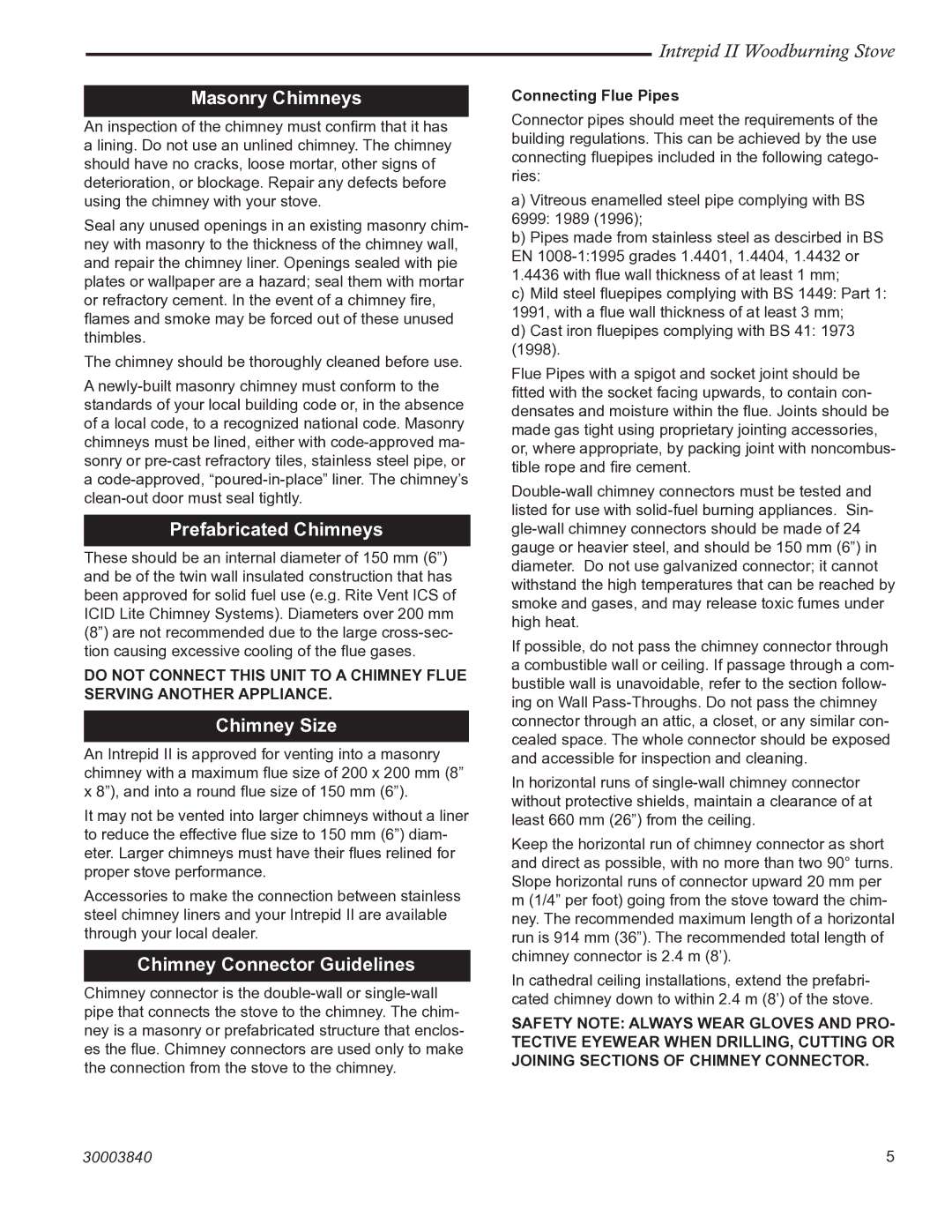1990CE specifications
The Vermont Casting 1990CE is a remarkable wood-burning stove that has earned a solid reputation for its innovative design, efficiency, and durability. Renowned for its classic aesthetics and modern functionality, the 1990CE combines traditional craftsmanship with cutting-edge technology, making it a favorite among homeowners looking to enhance their living spaces with both warmth and style.One of the most notable features of the 1990CE is its exceptional efficiency. The stove is designed to produce a high heat output while minimizing the consumption of wood. With an impressive efficiency rating, it effectively uses the fuel, ensuring that users enjoy longer burn times and reduced firewood usage. This efficiency not only provides warmth but also aligns with eco-friendly practices, reducing the impact on the environment.
The Vermont Casting 1990CE incorporates advanced secondary combustion technology, which allows for a cleaner burn and significantly lowers emissions. This state-of-the-art system ensures that the stove generates less smoke and reduces the amount of pollutants released into the atmosphere. As a result, users can enjoy the benefits of a cozy fire without the guilt of environmental harm.
In addition to its environmental features, the stove is built with a heavy cast iron construction, which ensures durability and longevity. The cast iron design not only provides excellent heat retention but also adds a timeless aesthetic to any home. The 1990CE is available in various finishes, allowing homeowners to select a style that complements their decor.
Another key characteristic of the Vermont Casting 1990CE is its user-friendly design. The stove features an easy-to-use air control system that allows users to adjust the intensity of the fire with ease. This precise control enables the creation of the desired ambiance, whether for a cozy evening or a more intense heating requirement.
Furthermore, the 1990CE offers a large viewing window, framed by a stylish cast iron design, allowing users to enjoy the mesmerizing flames while enhancing the overall visual appeal of the room. The stove’s clean lines and classic design make it a versatile addition to various interior styles, from rustic to contemporary.
Ultimately, the Vermont Casting 1990CE stands out for its combination of efficiency, aesthetic appeal, and user-friendly features. With its commitment to sustainable burning practices and craftsmanship, it provides an ideal solution for those seeking both warmth and style in their homes. Whether for practical heating or the simple joy of a crackling fire, the 1990CE is a remarkable choice that will serve homeowners well for years to come.

